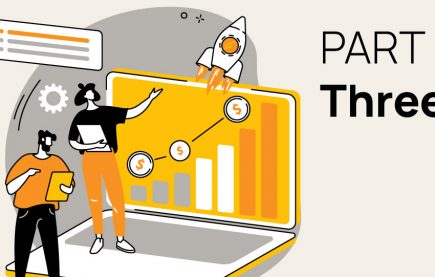How Much Does a Website Cost?
It’s the first and last question asked in 99% of initial client conversations: “So, how much is this thing gonna cost me?” Whether you are talking to a contractor, a digital agency, a wedding planner, or a cell phone company, you are liable to get the same answer: “It depends.”
Do you want the super-deluxe, shiny, technologically advanced and biologically enhanced version, or the basic cable?
The real question then, isn’t “How much does it cost?” but “What am I getting for my money?”
Now we’re getting down to the nitty-gritty. When it comes to web design, its important to consider the process. Every design firm does it slightly differently but what it boils down to is:
- Discovery
- Design
- Development
- Testing
- Launch
- Support
Discovery
This phase of the project begins with in depth conversations. What you get during discovery can vary according to the company you work with and the price you pay. Decide on a lower end developer or a template shop and this phase can be non-existent. Here, you get what you pay for.
With a midlevel or higher company, you can expect a more full exploration of exactly what your company’s needs are and how a custom website can fulfill them. You’ll discuss branding, your competition, positioning, and marketing. A design firm doing a truly custom website will make sure that it not only represents your brands personality but that it speaks directly to your customers.
Design
For $2,000 or less, you can purchase a template that you will have varying levels of control over customizing. It will serve as a customer facing brochure and a basic way for your audience to view products and services. Don’t expect much support (you might be lucky to get an email back) or too many options.
If you decide that you want to make more of an investment in the future of your business, then you’ll need the talents of an experienced graphic designer to give your site a unique look that engages users. A more custom website can run anywhere from $5,000 to $15,000. With a site like this, you’ll be interacting with real live humans who listen to your ideas! You’re not just buying templates; you should get a few options and then a specific number of revisions.
You can expect a CMS, or Content Management System, which you can use to add, edit and manage the content on your site. In addition, you may be able to integrate social media and have your site optimized for search engines to find it (SEO).
At $15,000 and up, you can count on working with an experienced designer or team of designers who will cater to your needs. You will receive multiple design options and multiple revisions. Logo design may be included for a comprehensive branding experience.
Development
The least expensive options are pre-coded, which becomes a problem when you start adding third party applications to extend the functionality of your site. Without custom coding, the site is likely to be buggy and with little to no support, the results can be incredibly frustrating.
A higher-end firm will have developers on staff to ensure the smooth functionality of your site from user interaction to applications, animating transitions, adding slideshows and more. For mid-priced sites, pre-existing may be used as a base and then custom coded to fit your needs. At premium prices, you will find complete custom coding, application development. Included in this time are research, development, and implementation.
You may wish to take advantage of responsive design. This is where a developer would ensure that your site fit perfectly on any device (mobile or desktop) by coding a flexible layout.
Testing
Testing your site is a must before you launch. Many pre-formatted sites claim to work in every browser but once you being imputing content and making changes you may not find this to be the case.
By contrast, when you work with a professional design firm, they will thoroughly test your site, ensuring that it works across multiple browsers, testing every page, every link, and every form.
Launch
Do you have a specific date in mind that you need to have the site up? To ensure that you make the deadline, you will need to work closely with a project manager who will shepherd the process along, marking milestones. A successful project will be closely monitored, its schedule adjusted as needed. A project manager acts as an advocate for you, the client, pushing designers and developers to get the work done on time and to your satisfaction. You will not find services like this with a bottom dollar web solution.
Support
Post-launch support is one of the most important and often forgotten aspects of hiring a web designer. Once your site is launched, you will need to stay in contact with the design firm for a variety of reasons such as:
- “My site is down, why?”
- “How do I add or delete an email address?”
- “Can you add a page?”
- “Why is my contact form not working?”
For these and hundreds of other reasons, you are going to want to maintain an ongoing relationship with your design firm. Depending on your contract, you may be able to work out a monthly retainer or pay by the hour.
The Final Tally
Many other factors play into the price of developing your website including regular costs of doing business for design firms. Rent, office equipment, employee salaries, etc…
Consider this: What would it cost you to hire an employee that works 24 hours a day, seven days a week? They never take breaks, they never call out sick, and they remember everything you tell them. They sell your products, inform customers about upcoming sales and answer their most frequently asked questions. Sounds like a great hire, huh? Well, that’s your site.
The money you spend is going towards the first interaction a customer will have with your company. You want it to be engaging, make a great impression, and motivate them to take action. So, decide what all that is worth to you and keep it in mind when you get your next quote from a design firm.



